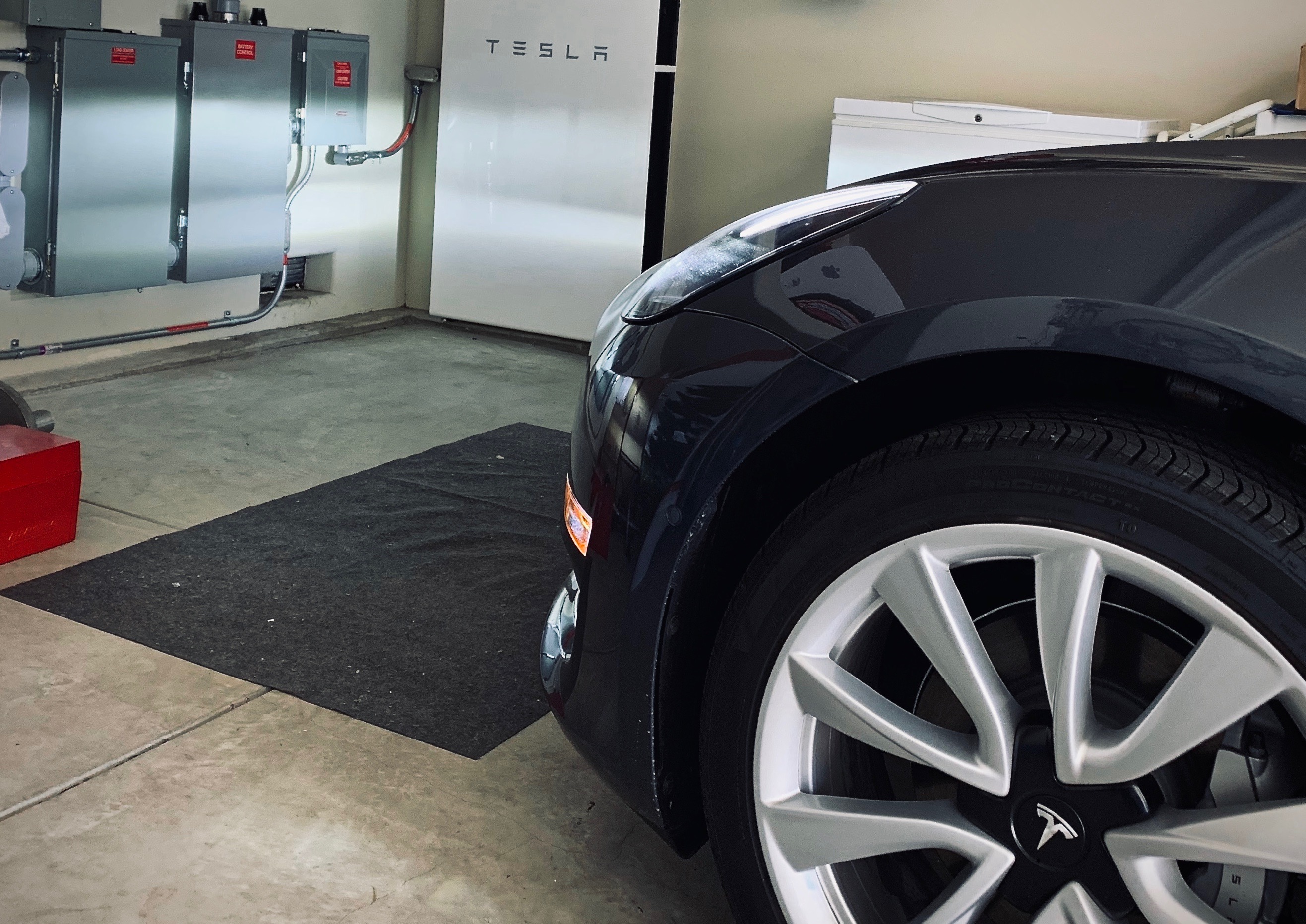

News
Tesla Powerwall smarter integration with vehicle charging hinted at in API code
Recent observations from Tesla’s Powerwall API hint that the company’s electric cars will soon have a feature that will allow them to communicate better with the home battery system. With such a system in place, Tesla’s electric cars will not drain the Powerwall when the grid goes down.
The upcoming Powerwall and Tesla integration feature was first spotted by Model X owner and Reddit user u/cwiedmann.
“Looking through the data returned from the API, I see there’s now evidence of upcoming features for integrating Powerwalls and car charging as Elon mentioned. This appears to be support for preventing car charging from draining the batteries when the grid is down and maybe to allow the car to absorb surplus solar energy,” u/cwiedmann wrote on the r/TeslaMotors subreddit.
When the grid goes down, Tesla Powerwalls can meet the energy demands of a home, including charging an electric car like the Model 3, Model X, or Model S. That being said, there’s a big room for improvement especially when it comes to how a Tesla vehicle communicates with the home battery system. Tesla’s electric cars have massive battery packs after all, and they can drain an off-grid Powerwall if left unattended.
This appears to have happened in May 2019 to Tesla owner Erik Strait, who also runs the YouTube channel DӔrik. Strait brought up the Powerwall issue they encountered in Colorado and suggested features that may come handy to consumers, such as a setting that allows the home battery system to prevent cars charging when they are off the grid. Tesla CEO Elon Musk responded with a brief “Coming soon.”
Coming soon
— Elon Musk (@elonmusk) May 22, 2019
Elon Musk posted his response to the Tesla owner-enthusiast last May, and there have been few updates on the feature since. Nevertheless, references to the feature in the Powerwall’s API today suggests that the home battery-electric vehicle integration may be coming sooner than expected. How the functionality will be rolled out remains to be seen too, but there’s a good chance that Tesla may introduce the feature through an over-the-air update, similar to how the company activates “Storm Watch” for Powerwall-equipped homes located in areas that are facing natural disasters.
Ultimately, the upcoming Powerwall feature shows that Tesla is making a lot of headway in integrating key features of its energy products and its electric cars. This ecosystem could ultimately encourage buyers of Tesla’s electric cars to adopt the company’s energy and battery storage products too, similar to how Apple has encouraged customers to purchase devices within its product line due to their feature integration.
Very early on, we had the ability to use the car as a battery outputting power. Maybe worth revisiting that.
— Elon Musk (@elonmusk) July 4, 2018
These recent observations on the Powerwall API also invoke some thoughts on a feature that was mentioned by Elon Musk back in 2018. In a tweet then, Musk noted that it may be worth revisiting the idea of using its cars as batteries that output power, similar to a V2G (vehicle-to-grid) system. Tesla does seem to be exploring this idea recently, as hinted at by the Cybertruck’s capability to use its massive battery pack to power tools from its onboard outlets.
Teslarati will update you once the Powerwall-Tesla electric vehicle integration feature goes live. For now, this is a welcome development so the habit of “always be charging” does not lead one to a home without power. But of course, there’s always Camp Mode just in case.
Upcoming Powerwall/Vehicle Integration API Leaks from r/teslamotors
News
Tesla Semis to get 18 new Megachargers at this PepsiCo plant
PepsiCo is set to add more Tesla Semi Megachargers, this time at a facility in North Carolina.
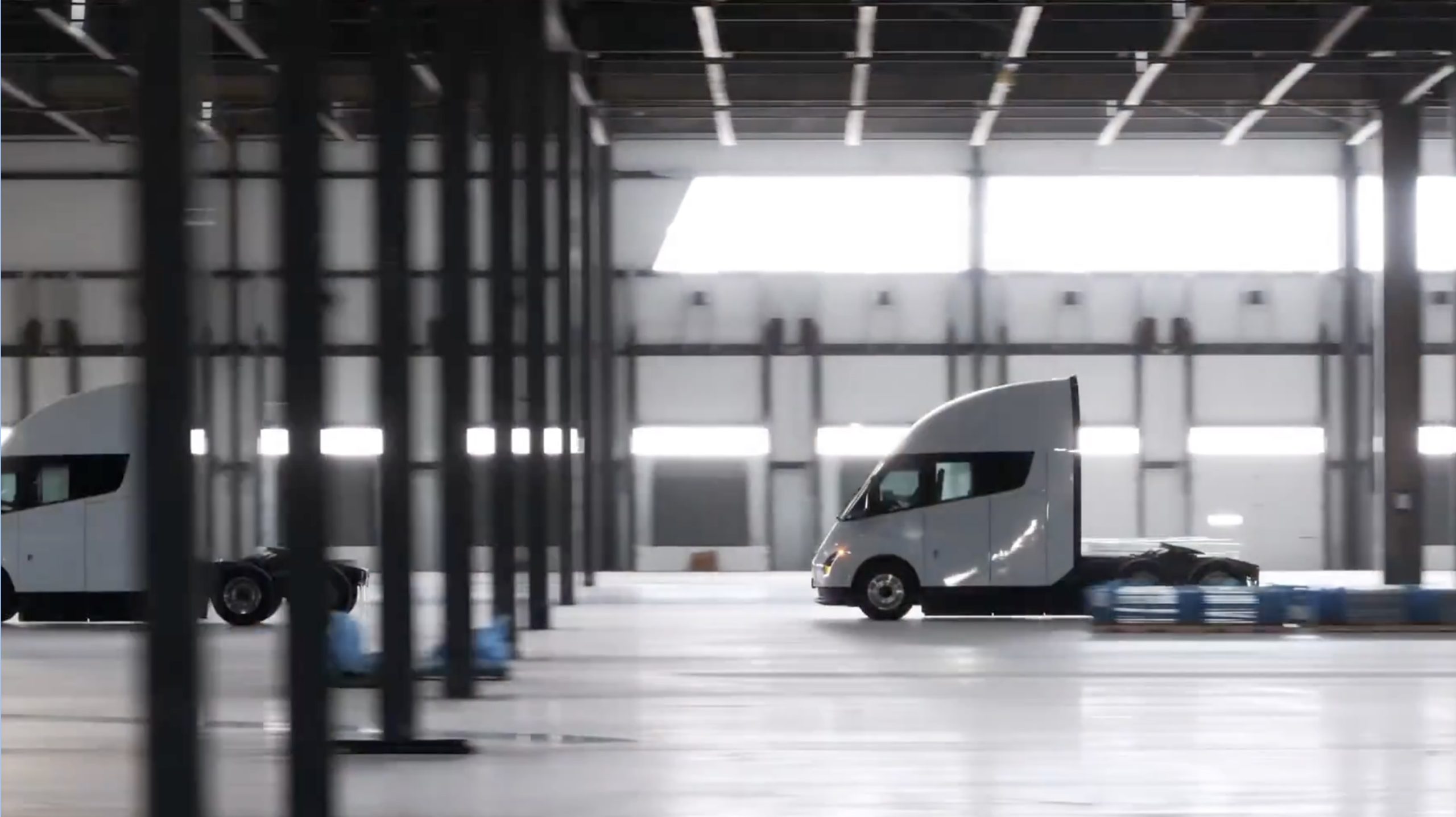
Tesla partner PepsiCo is set to build new Semi charging stations at one of its manufacturing sites, as revealed in new permitting plans shared this week.
On Friday, Tesla charging station scout MarcoRP shared plans on X for 18 Semi Megacharging stalls at PepsiCo’s facility in Charlotte, North Carolina, coming as the latest update plans for the company’s increasingly electrified fleet. The stalls are set to be built side by side, along with three Tesla Megapack grid-scale battery systems.
The plans also note the faster charging speeds for the chargers, which can charge the Class 8 Semi at speeds of up to 1MW. Tesla says that the speed can charge the Semi back to roughly 70 percent in around 30 minutes.
You can see the site plans for the PepsiCo North Carolina Megacharger below.
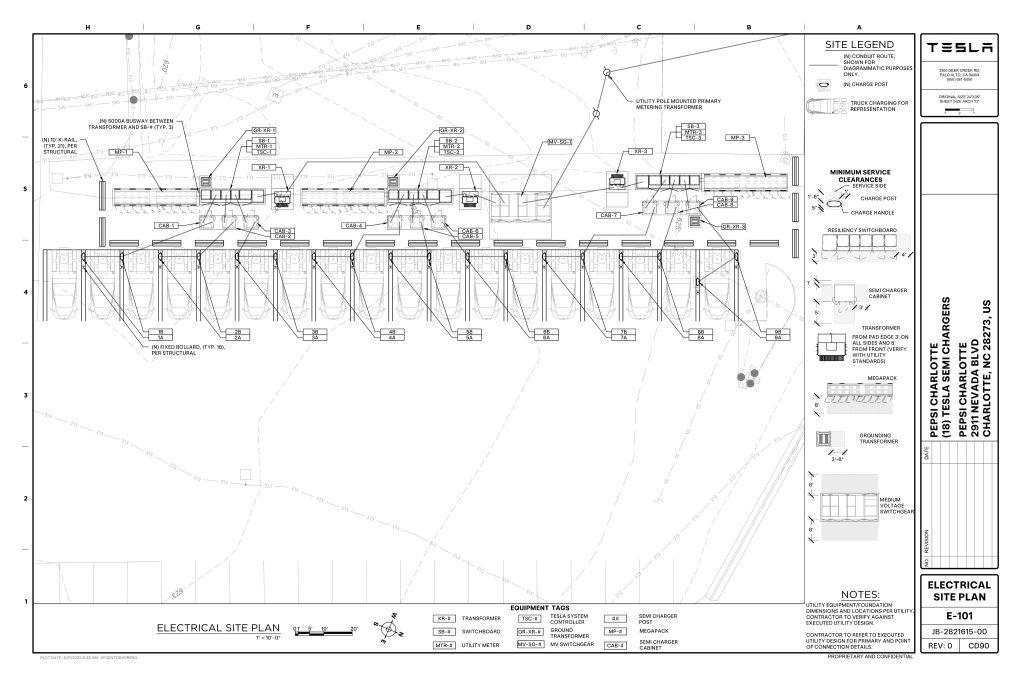
Credit: PepsiCo (via MarcoRPi1 on X)

Credit: PepsiCo (via MarcoRPi1 on X)
READ MORE ON THE TESLA SEMI: Tesla to build Semi Megacharger station in Southern California
PepsiCo’s Tesla Semi fleet, other Megachargers, and initial tests and deliveries
PepsiCo was the first external customer to take delivery of Tesla’s Semis back in 2023, starting with just an initial order of 15. Since then, the company has continued to expand the fleet, recently taking delivery of an additional 50 units in California. The PepsiCo fleet was up to around 86 units as of last year, according to statements from Semi Senior Manager Dan Priestley.
Additionally, the company has similar Megachargers at its facilities in Modesto, Sacramento, and Fresno, California, and Tesla also submitted plans for approval to build 12 new Megacharging stalls in Los Angeles County.
Over the past couple of years, Tesla has also been delivering the electric Class 8 units to a number of other companies for pilot programs, and Priestley shared some results from PepsiCo’s initial Semi tests last year. Notably, the executive spoke with a handful of PepsiCo workers who said they really liked the Semi and wouldn’t plan on going back to diesel trucks.
The company is also nearing completion of a higher-volume Semi plant at its Gigafactory in Nevada, which is expected to eventually have an annual production capacity of 50,000 Semi units.
Tesla executive teases plan to further electrify supply chain
News
Tesla sales soar in Norway with new Model Y leading the charge
Tesla recorded a 54% year-over-year jump in new vehicle registrations in June.
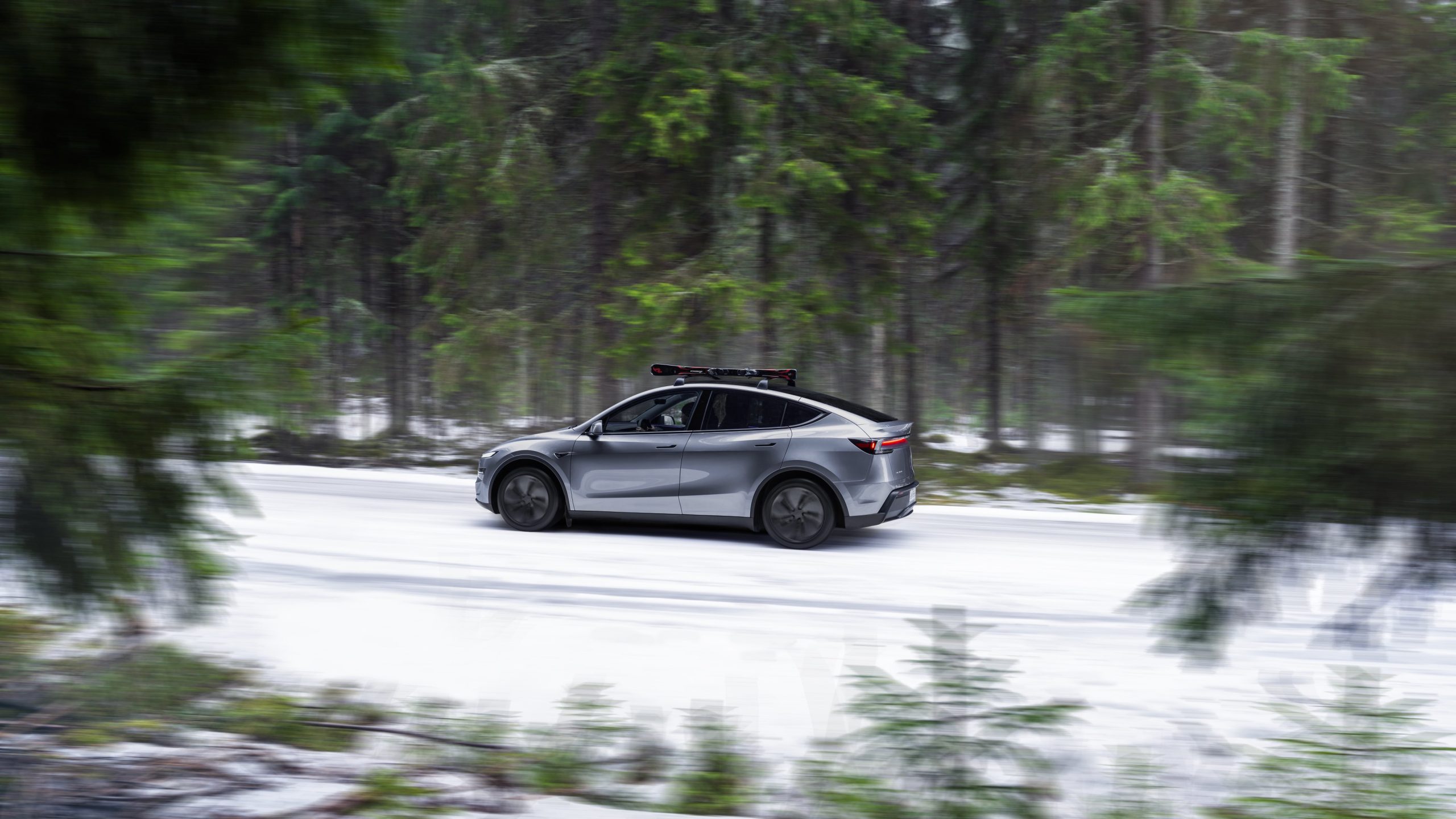
Tesla is seeing strong momentum in Norway, with sales of the new Model Y helping the company maintain dominance in one of the world’s most electric vehicle-friendly markets.
Model Y upgrades and consumer preferences
According to the Norwegian Road Federation (OFV), Tesla recorded a 54% year-over-year jump in new vehicle registrations in June. The Model Y led the charge, posting a 115% increase compared to the same period last year. Tesla Norway’s growth was even more notable in May, with sales surging a whopping 213%, as noted in a CNBC report.
Christina Bu, secretary general of the Norwegian EV Association (NEVA), stated that Tesla’s strong market performance was partly due to the updated Model Y, which is really just a good car, period.
“I think it just has to do with the fact that they deliver a car which has quite a lot of value for money and is what Norwegians need. What Norwegians need, a large luggage space, all wheel drive, and a tow hitch, high ground clearance as well. In addition, quite good digital solutions which people have gotten used to, and also a charging network,” she said.
Tesla in Europe
Tesla’s success in Norway is supported by long-standing government incentives for EV adoption, including exemptions from VAT, road toll discounts, and access to bus lanes. Public and home charging infrastructure is also widely available, making the EV ownership experience in the country very convenient.
Tesla’s performance in Europe is still a mixed bag, with markets like Germany and France still seeing declines in recent months. In areas such as Norway, Spain, and Portugal, however, Tesla’s new car registrations are rising. Spain’s sales rose 61% and Portugal’s sales rose 7% last month. This suggests that regional demand may be stabilizing or rebounding in pockets of Europe.
News
Tesla to open first India experience center in Mumbai on July 15
The event is scheduled for July 15 at the Bandra Kurla Complex, a premier business district in Mumbai.
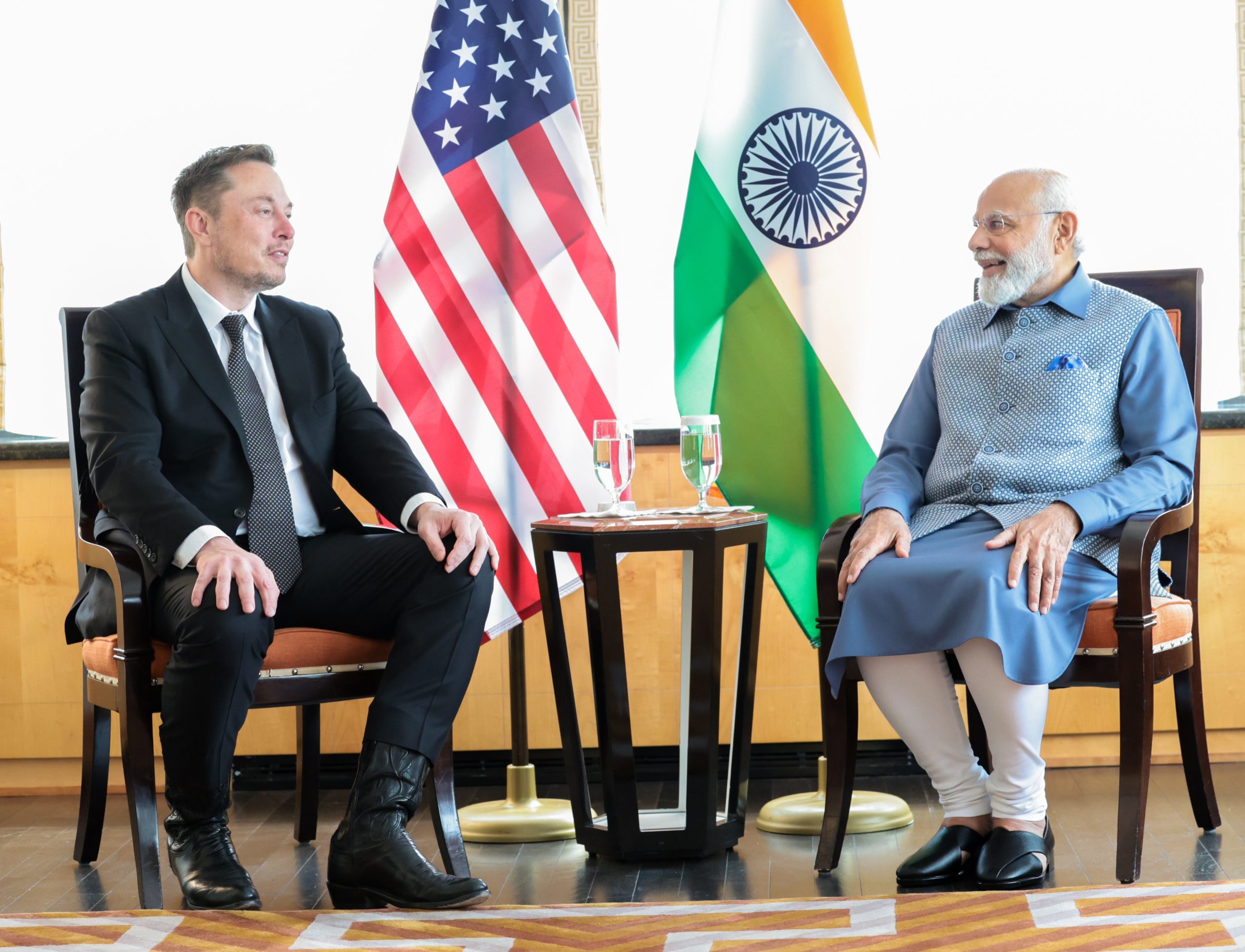
Tesla is officially entering India with the opening of its first showroom and experience center in Mumbai next week. The event is scheduled for July 15 at the Bandra Kurla Complex, a premier business district in Mumbai.
Tesla imports to India signal an early-stage market entry strategy
According to Indian customs data, Tesla has imported approximately $1 million worth of vehicles, charging equipment, and merchandise into the country between January and June. The shipments include six Model Y comprised of five standard variants valued at $32,500 each and one long-range model valued at $46,000. Several Superchargers and related accessories were also imported into the country, as noted in a Yahoo Finance report.
These vehicles are expected to serve as display models and test units as Tesla gauges interest and navigates India’s high import duties, which hover around 70% on fully built vehicles. Despite the significant tariffs in the country, Tesla has opted to begin its India expansion with imported cars.
An invitation to the Tesla India launch event has been making the rounds online. As could be seen in the document, Tesla noted that July 15 would be the launch of Tesla in India through the opening of a Tesla experience centre at Bandra Kurla Complex in Mumbai.
Tesla India’s hiring and expansion efforts are underway
Tesla has filled a number of key roles from the 30+ positions it advertised earlier this year. Recent hires include store managers, service executives, and sales staff, while ongoing recruitment is focused on supply chain engineers and vehicle operators to support the company’s Autopilot program.
Indian officials have been open about their intention to encourage Tesla to establish a manufacturing hub in the country. Tesla does seem open to the idea, at least, with reports last year hinting that Elon Musk was set to visit the country to discuss or even potentially announce a domestic project. The trip, however, was ultimately canceled.
-

 Elon Musk2 weeks ago
Elon Musk2 weeks agoTesla investors will be shocked by Jim Cramer’s latest assessment
-

 Elon Musk1 day ago
Elon Musk1 day agoxAI launches Grok 4 with new $300/month SuperGrok Heavy subscription
-

 Elon Musk4 days ago
Elon Musk4 days agoElon Musk confirms Grok 4 launch on July 9 with livestream event
-

 News1 week ago
News1 week agoTesla Model 3 ranks as the safest new car in Europe for 2025, per Euro NCAP tests
-

 Elon Musk2 weeks ago
Elon Musk2 weeks agoA Tesla just delivered itself to a customer autonomously, Elon Musk confirms
-

 Elon Musk1 week ago
Elon Musk1 week agoxAI’s Memphis data center receives air permit despite community criticism
-

 News2 weeks ago
News2 weeks agoXiaomi CEO congratulates Tesla on first FSD delivery: “We have to continue learning!”
-
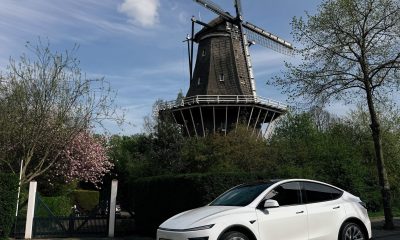
 News2 weeks ago
News2 weeks agoTesla sees explosive sales growth in UK, Spain, and Netherlands in June
















